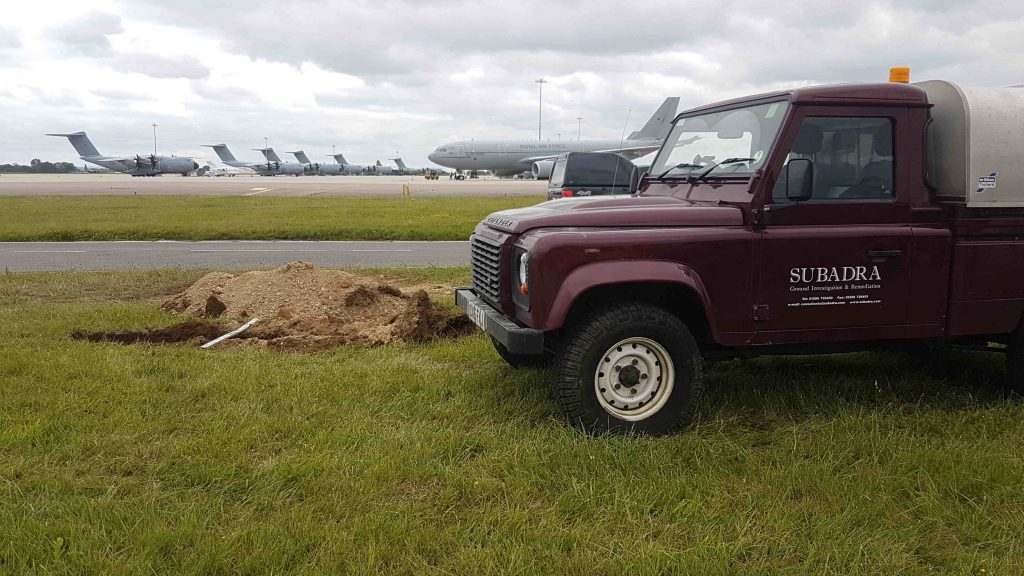
There really is something quite hypnotic about watching very large aircraft taking off and landing, so our site team jumped at the chance of spending a few days carrying out soakaway testing at an RAF base.
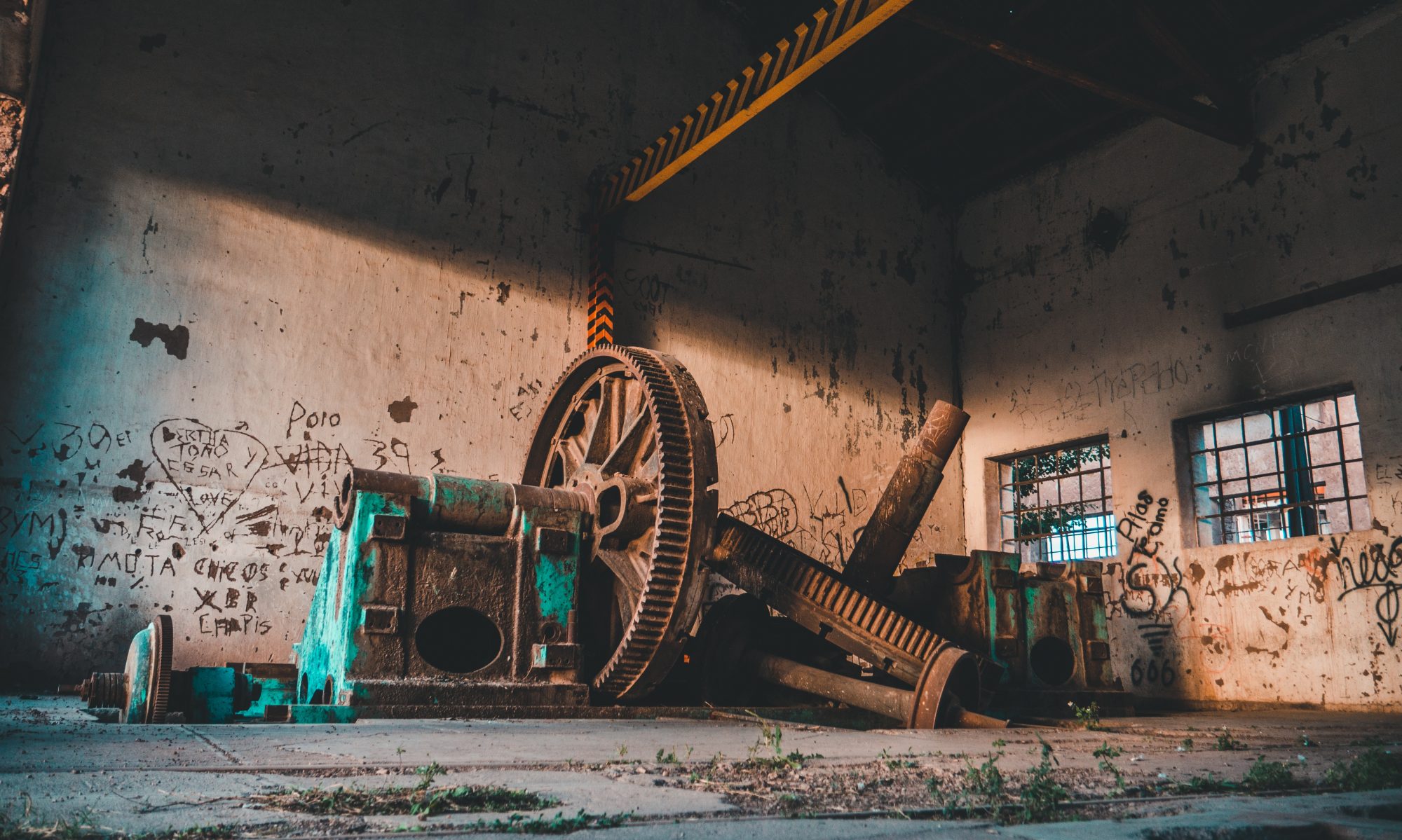
Geo-Environmental Services

There really is something quite hypnotic about watching very large aircraft taking off and landing, so our site team jumped at the chance of spending a few days carrying out soakaway testing at an RAF base.
Anyone who has served in the armed forces is probably familiar with the saying “time spent on reconnaissance is rarely wasted”. The civilian equivalent might be “prior planning prevents poor performance”. We think this is good advice and so we always do a comprehensive underground utility survey, including reviewing records held by the relevant utility companies, before breaking ground at any site. If you think this might seem overkill then we recommend that you click on this link.
If you’d like to know more about our underground utility surveys please contact Steven Partridge – 01296 739413
.

It certainly feels like autumn today. Both temperatures and leaves are falling; winter is coming!
So it seemed like the perfect time to take our latest set of surveying equipment out on site for a test drive. It may not look much but the TopCon DS103 Robotic Total Station is the very latest in precision survey kit, whether for carrying out topographic surveys prior to scheme design or for setting out on a construction site.
We’d be delighted to discuss any survey requirements you have. Please contact Steven Partridge – 01296 739413
We were recently appointed to complete Geo-Environmental Investigations at two new school sites, to be constructed using the latest modular construction methods.
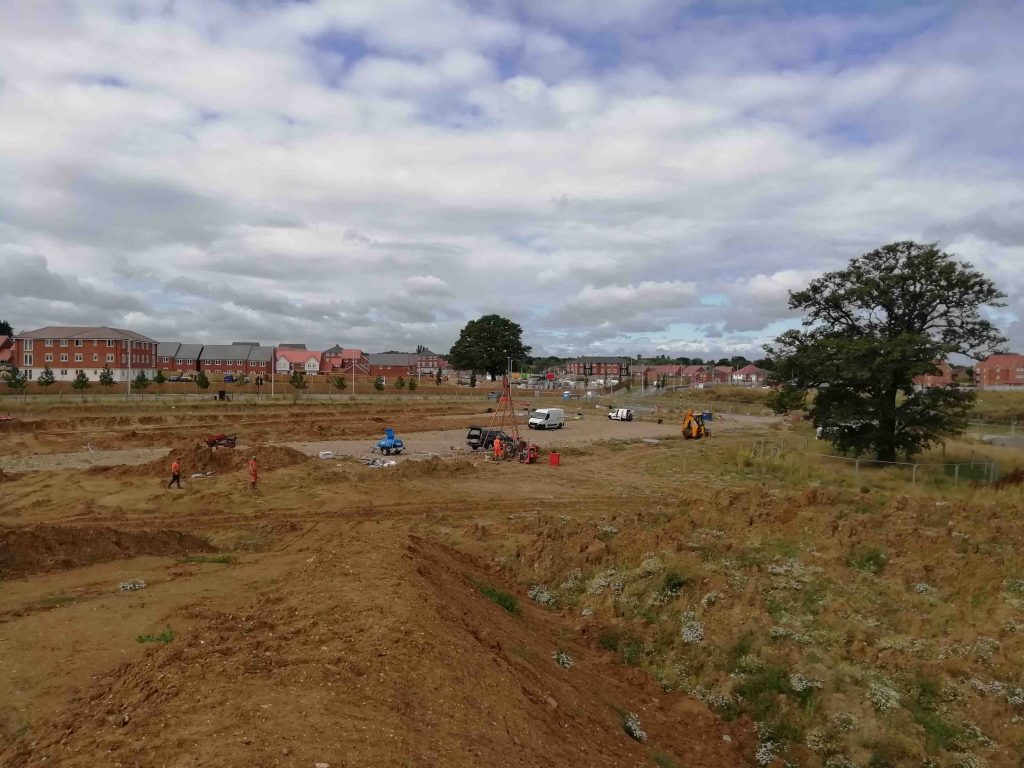
Our investigation involved 100m of linear drilling, environmental and geotechnical laboratory testing, over 50m of dynamic probing, soakaway testing, trial pits, CBR tests, Plate Bearing Tests, Topographic surveys, CCTV surveys and utility surveys. All the site works were completed within 3 days and reports issued within 2 weeks.
Surely that gets an A*!
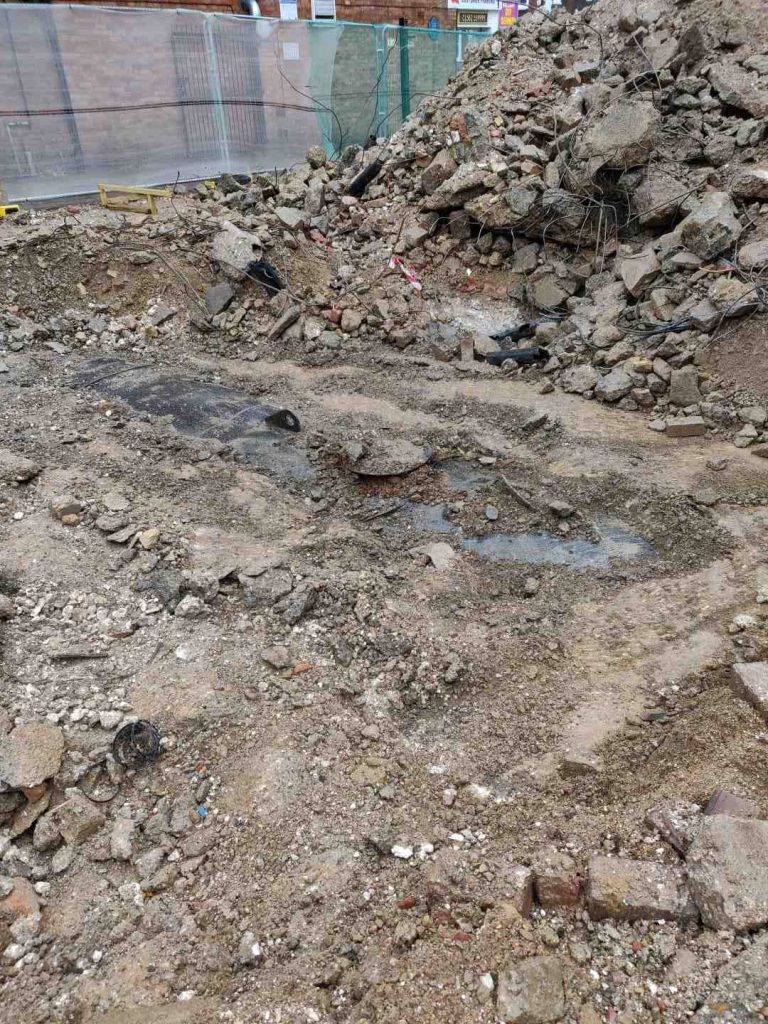
We were asked to carry out an environmental ground investigation at a disused transport depot. Not surprisingly this identified diesel contamination at ~2m below ground level.
There was no sign of any obvious contamination source and given the site’s previuous use as a transport depot, we thought it likely that an abandoned below ground fuel tank might be present.
We therefore went back to the site and carried out a shallow trial pitting exercise which revealed……well, you can see for yourself.
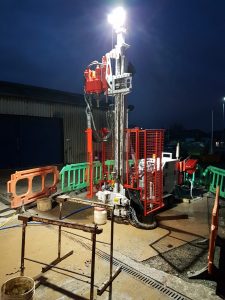
The nights are drawing in and daylight is at a premium. This can limit the hours available for sitework. Or rather it could until recently. We’ve just completed a four week long refit and refurbishment of our drill rigs. This has included fitting task lighting ensuring that we can work long into the night – or even all night of the job requires it.
For more information please contact Angus Gale – 07748358304
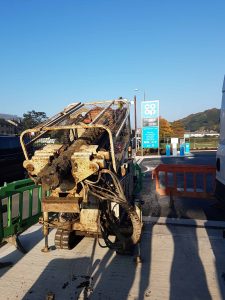
The site investigation industry has, traditionally, relied on light cable percussion (generally known as shell and auger) drilling. This is slow, messy and crude providing low quality geotechnical and environmental samples at best. Thankfully, these days it isn’t the only option available to you.
The majority of our general site investigation drilling is done using hollow stem rotary methods. These provide signficantly better quality data with minimal sample disturbance, even in the toughest of conditions. This week we were working at a site underlain by glacial and millstone grit cobbles, sand and terrace gravels in a sandy clay matrix. We drilled five boreholes to their target depth on 8m in one working day – something that might have taken a shell and auger crew a week – minimising the disruption to our client’s business which was able to remain open throughout.
We’ve recently started the first phase of our latest remediation project: the redevelopment of a former petrol station site located in a highly environmentally sensitive location.
Stage one of our work comprised identifying and removing the source of the contamination. As you can see, we are pretty confident that we found the root-cause , although we have to wonder how the former site operator didn’t know something was wrong with this tank.
We’re currently working to design and integrate our groundwater treatment system with the construction work to ensure that there are no delays to the redevelopment.
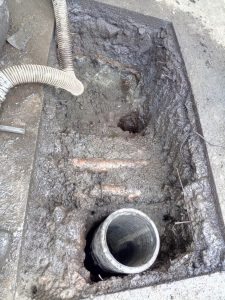
Remediation is always challenging, but it’s made much harder when we are asked to do it at a busy filling station which needed to remain open throughout our works. Having previously determined that the contamination was confined to a relatively thin layer of gravel but was migrating offsite, we decided to install some small diameter sumps across the site in preparation for a programme of ISCO (treatment using in situ chemical oxidation).
Fitting the sumps between buried services was always going to be tricky, so we pre-excavated each location using vacuum drilling techniques. As you can see from the photographs, it was a good job that we did, with numerous pipes and ducts exposed (and duly avoided).
The excavation has now been backfilled and the pavement reinstated, leaving us with a small manhole cover to provide access to our sump when we return to start treating the ground. The filling station remained open throughout our works.
It probably comes as no surprise that it takes a very different skillset and completely different equipment to core through rock as opposed to boring through the sand and clay soils that are more commen near the ground surface.
The correct core bit (i.e. the part of the drill string which cuts the rock) selection is the key to obtaining high quality quality core samples. Each rock type requires a specific core bit to cut it cleanly and efficiently. So, to achieve the best results, we carry a range of different core bits with us at all times. Our drilling crew recently used our T6 coring barrel to core to depths of 25m in a range of geology from conglomerates to slate and everything in between.
So, you might say that coring is not boring. Fact!